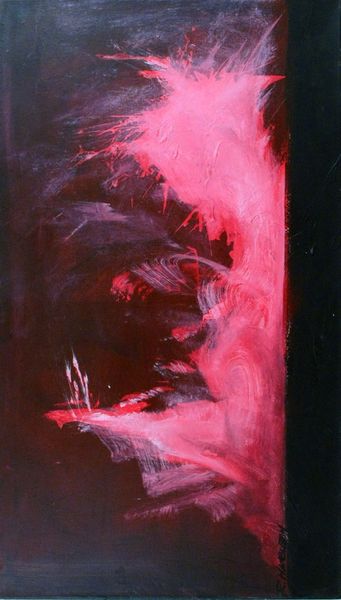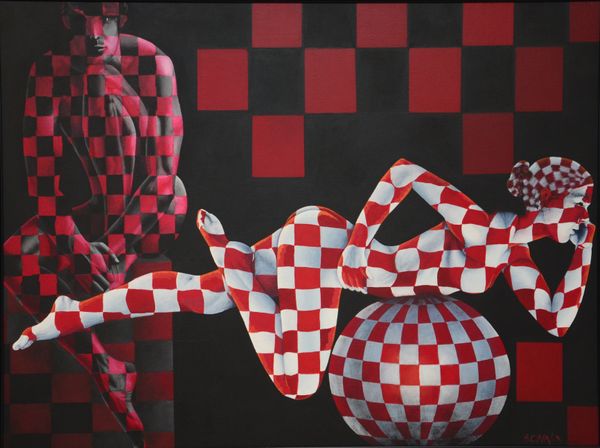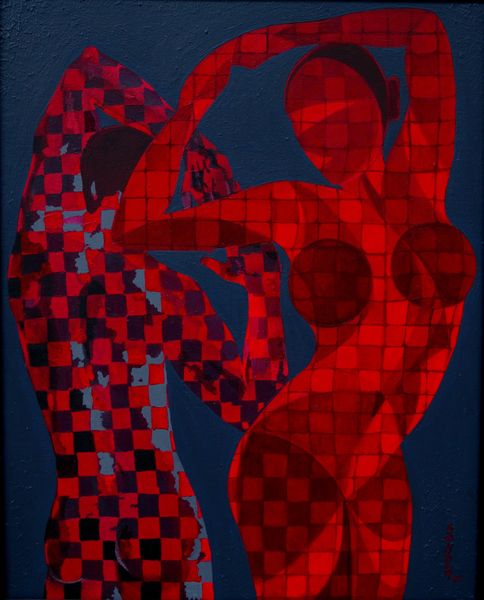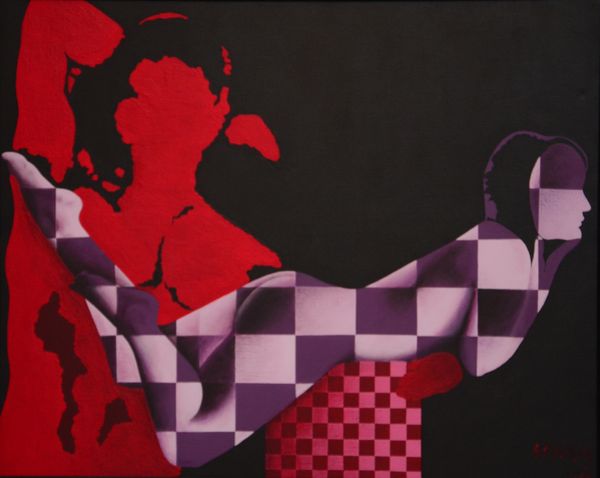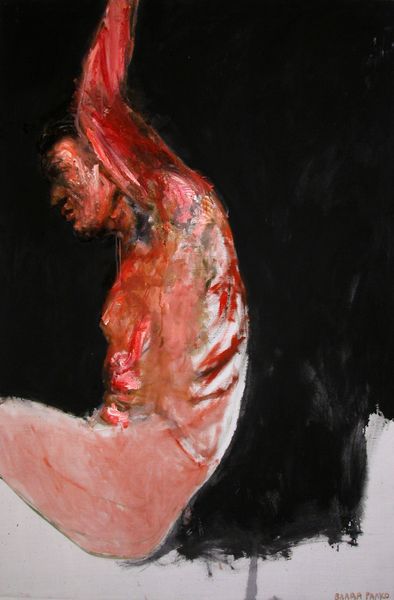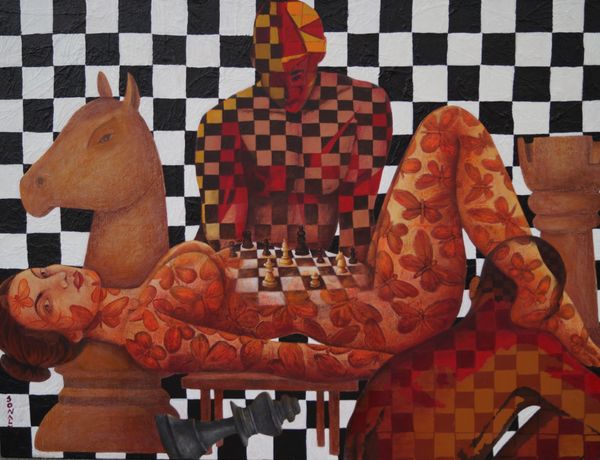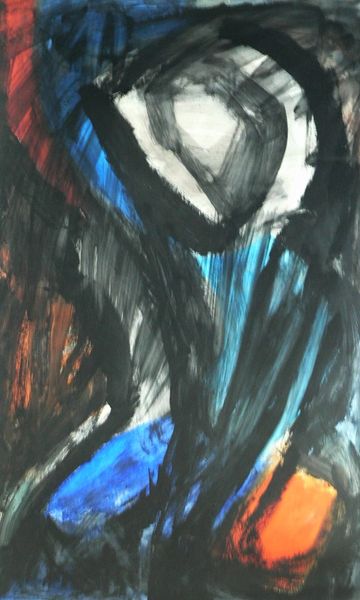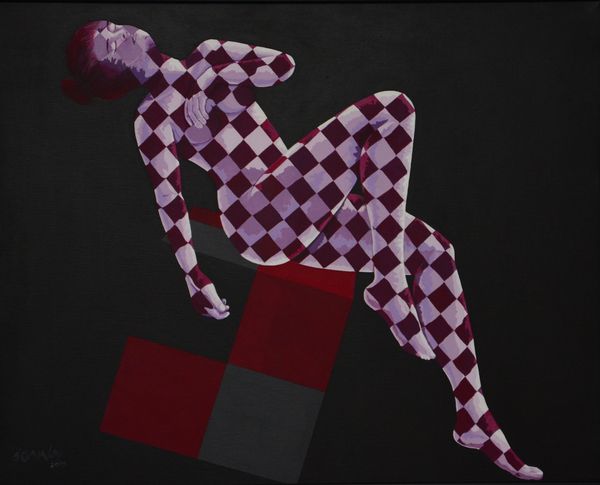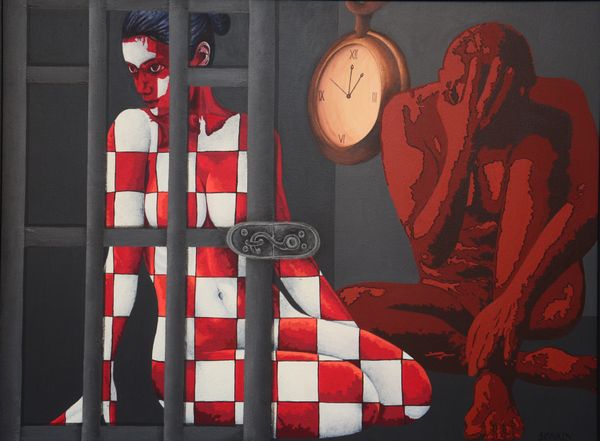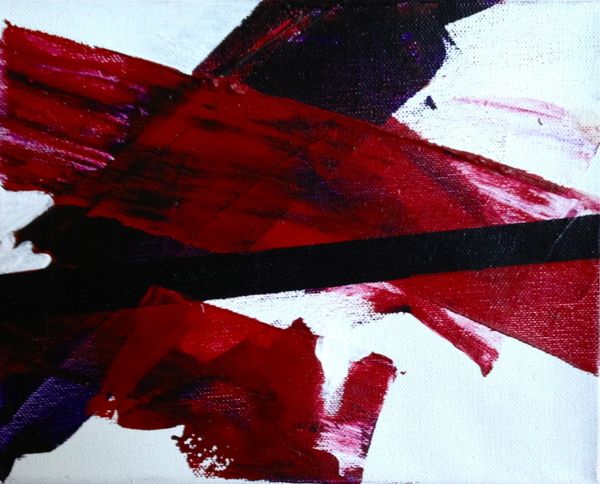
painting
#
portrait
#
painting
#
figuration
#
neo expressionist
#
expressionism
#
nude
#
portrait art
#
expressionist
#
self portrait
Copyright: © All content copyright Sonaly Gandhi
Editor: This is an untitled painting; we don't have a date for it but it’s by Sonaly Gandhi. It seems to be figurative work, rendered in a checkered pattern. There's an almost unsettling contrast between the intimacy of the nude figures and the hard geometry of the pattern. What is your take on this artwork? Curator: It strikes me as a potent visual statement, perhaps a commentary on societal constraints placed upon the body, or even on personal identity. The checkered pattern, applied directly onto the skin, transforms the figures into surfaces. What does this evoke, considering the art's possible placement within, say, the Neo-Expressionist movement? Editor: It feels like it cages them. The checkerboard disrupts the form; it almost dehumanizes the subjects. You mentioned its connection with Neo-Expressionism? Curator: Yes, Neo-Expressionism was very interested in reintroducing figuration in a raw, emotional way. Do you see any parallels to artists addressing societal issues during that time, particularly the representation, or, arguably, misrepresentation of bodies? Could the red and black pattern serve as a commentary on binary thinking? Editor: That's interesting. The red and black could also suggest a warning or danger, drawing focus on the potential exploitation or judgment of bodies, specifically female bodies, which feel very exposed here. Curator: Precisely. It is not simply a portrait but a question of how social forces inscribe themselves upon the individual. How powerful do you think the use of the lantern in the composition is in emphasizing that this unveiling can be interpreted either as liberating or dangerously exposed? Editor: I hadn't thought of the lantern in that light. Now it highlights both the vulnerability and defiant act of display that's in dialogue here. Thank you. Curator: Indeed, by considering its place in a broader cultural and historical narrative, what at first appears to be merely a formal study takes on a much deeper, more politically charged resonance.
Comments
No comments
Be the first to comment and join the conversation on the ultimate creative platform.
